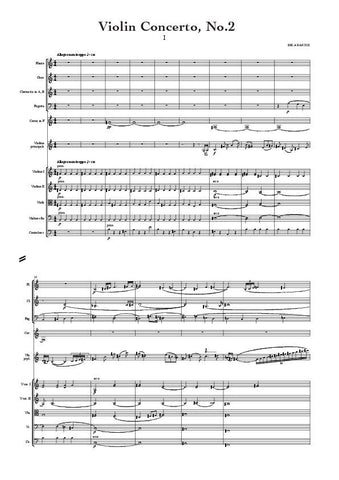Pleyel, Ignaz: Cello Concerto in C major (Benton 108) (AE304) – sheet music
Previous Product Next Product
Description |
Pleyel, Ignaz (1757-1831)
|
||||||||||||||||||
Details |
Pleyel's output of concertos is comparatively small although the works were issued in numerous editions by European publishing houses during his lifetime. Perhaps the most confusing aspect of the Pleyel concertos is the existence of multiple versions of the same work arranged for different solo instruments. Many of these arrangements stem from Pleyel himself and are, therefore, of equal authenticity. The difficulty in these cases does lie in not lie in establishing a work's authenticity so much as determining whether a particular version of it should be accorded primacy. In her landmark thematic catalogue Rita Benton lists eight concertos (Benton 101-108; nine if one includes Benton 103A and its variants) and a host of arrangements. She also lists a number other works arranged as concertos (Supplement I) and a number of unidentified concertos. Among the authentic concertos are four works whose primary solo instrument designation is violoncello (Benton 101, 102, 104, 108); one work is described as a 'Concerto for Viola or Violoncello' (Benton 105) and a further work as a 'Concerto for Clarinet, Flute or Violoncello'(Benton 106). One of the authentic works - the Concerto in D (Benton 102) - is known only from an entry in the Breitkopf Catalogue (Supp. XV 1782-84). Little is known of the genesis of any of these works although it is interesting to note that there are more concertos for violoncello than for any other instrument. The present work is unusual in that unlike Pleyel's other concertos it was never published and is not known in any other version. From a stylistic perspective the work appears to be rather earlier than the other concertos. It is certainly less demanding for the soloist than some of the other works although it is by no means uninteresting or lacking in technical difficulties. The scoring, for strings and horns, is old-fashioned and immediately brings to mind the marvellous cello concertos written by Leopold Hofmann in the 1760s and early 1770s. It is possible that the work was written during Pleyel's years with Haydn and that later in life he considered it unsuitable for publication. On the other hand, the explanation might be a good deal simpler: the autograph score left his possession and he did not own a set of parts. This edition is based on a set of very slipshod parts preserved in the archive of the Gesellschaft der Musikfreunde in Wien under the shelfmark IX. 179/a. The wrapper reads: In C / Concerto / a / Violoncello Principale / Violino Primo / Violino Secondo / Corno Primo / Corno Secondo / Alto Viola / e / Basso / Del Sigl: Pleyel The parts are full of errors: there are bars missing from some parts, additional bars in other parts and a great number of wrong notes and notational inconsistencies in this edition. The notation of articulation and dynamic markings has been standardised throughout, and, where missing, markings have been reconstructed from parallel passages. These are indicated by the use of dotted slurs or brackets where appropriate. Like most eighteenth-century sources, the print is inconsistent at times in its notation of appoggiature ; these have also been standardised to minimise confusion. Obvious wrong notes have been silently corrected; otherwise, any editorial emendation with no authority from the source is placed within brackets. Allan Badley |
||||||||||||||||||
Score Preview (best viewed in full screen mode) |
|||||||||||||||||||














